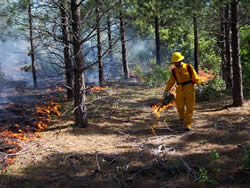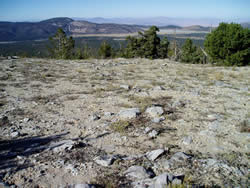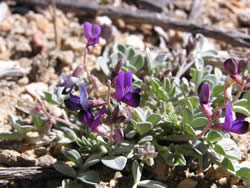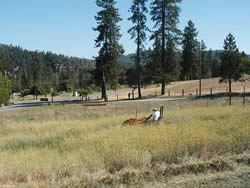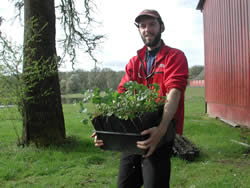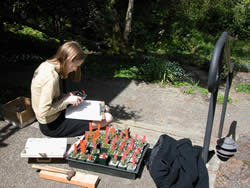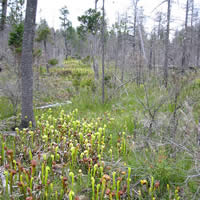- Forest Service Home
- Celebrating Wildflowers
- Home
- About Us
- News & Events
- Wildflower Viewing Areas
- Wildflower Ethics
- Forest Service Regions
- Just For Kids
- Teacher Resources
- Pollinators
- Native Gardening
- Native Plant Materials
- Invasive Plants
- Rare Plants
- Beauty of It All
- Interesting Plants
- Unique Communities
- Ethnobotany
- Special Features
- Wildflower Links
- Contact Us
USDA Forest Service Celebrating Wildflowers
|
|
|
How Are Rare Plants Conserved?
Success StoriesThe Forest Service and its partners and volunteers have had many successes in restoring and recovering rare plants on our national forests and grasslands across the country. We invite you to explore these tales with happy endings. Our botanists, ecologists and other resource specialists have many tools to conserve, protect, and manage these rare jewels of our natural heritage. Some of the most important and effective tools available are habitat conservation, off-site (ex situ) conservation, and law enforcement. Our partners and volunteers are essential to success in all aspects of our rare plant programs. A great many of the rare plants that occur on the national forests and grasslands are best conserved by keeping their native habitats healthy. Sometimes the only action necessary is to conserve and protect existing rare plant habitat and to conduct periodic monitoring to ensure that rare plant populations are still thriving. Periodic monitoring of healthy rare plant populations can protect their long term existence, by detecting downward trends or alteration of their habitat which would otherwise go unnoticed. In some cases, conserving and protecting the existing habitat of rare species, such as meadows, prairies or savannas, may include conducting prescribed burns because these areas depend on fire to maintain their openness. This is especially important because habitat may disappear or change due to fire suppression practices. Some species and populations of rare plants, however, need more than habitat conservation. These plants need active management to reverse downward population trends. Periodic monitoring is essential to detecting the first signs of decline in rare plant populations and their habitats. Once we determine a particular set of corrective actions needed to reverse the decline of a rare plant population, we implement those necessary actions. Sometimes habitat restoration is possible by removing weeds, or by simply allowing natural disturbance by fire, water, or wind to return to the ecosystem. In many of our savannas, woodlands, and prairie ecosystems, the exclusion of fire has led to such serious decline of disturbance-dependent plants that their continued existence is compromised. Removing encroaching woody plants and reintroducing fire have proven to help restore these fire-dependent communities and the plants, both common and rare, that rely on disturbance-dependent ecosystems. Often, though, rare plants are restricted to special soil types, which are nearly impossible to recreate once the soil layers are churned up. Conservation of good quality habitat and maintenance of natural ecological processes in these habitats are our best hope for these substrate-specific rare plants.
Too often, the introduction of invasive species into rare plant habitats has had substantial adverse effects on rare plants, their populations, and habitats. The use of integrated pest management actions to eliminate and control invasive species will allow for the recovery of the community and its rare plants.
In some cases, plants have declined to where they become very rare, with an increased possibility of individuals or an entire population disappearing from a site. For some rare plants, the disappearance of their pollinator is the cause of their rarity. In these cases, it may become necessary to propagate these plants off-site and replant the seedlings back into their habitats. Additionally, monitoring of pollinators at sites where the plant is successfully reproducing will allow us the option of introducing the pollinator back into that rare plant’s habitat.
Sometimes the threats facing a rare plant occur primarily on non-federal lands, where the Endangered Species Act provides only limited conservation authority for plants. In these cases, we may work with a partner such as the Center for Plant Conservation (CPC), to rescue plants or their seed when possible and place them into a CPC garden (ex-situ conservation). Off-site storage and cultivation of genetically appropriate plant material is a critical step in supporting restoration in the wild. The Center’s goal is to protect the most imperiled U.S. plants from extinction and restore them to secure habitats. Full implementation and enforcement of national, international, and state laws protecting rare plants is critical to their successful conservation and recovery. Unethical or ignorant plant collection for horticultural or herbal uses has caused some plants to decline in the wild, leading to listing of some species of plants as endangered or threatened under the Endangered Species Act. Over-collection of cacti, orchids, and carnivorous plants have resulted in the entire orchid, cacti and pitcher plant families being listed on Appendix 2 of the Convention on International Trade in Endangered Species of Wild Fauna and Flora (CITES). The Forest Service works very closely with our horticulture partners in making the public aware of the rarity of many of these plants in their natural habitats. Together we encourage the conservation of these precious few. Many of these rare plants are available to the public through seed exchanges and specialty nurseries. Collection of rare plants on the national forests and grasslands is illegal. Permits for scientific research may be obtained in certain cases. Fun Fact
The rarest plant to ever be conserved is the Franklin tree, a small flowering tree discovered by John and William Bartram in 1765, close to the mouth of Georgia's Altamaha River near Darien. The Bartrams carried some of the plants and seeds back to Philadelphia, where they named it Franklinia alatamaha in honor of their friend Benjamin Franklin and the river in Georgia where it was discovered. Fortunately, the Bartrams propagated the plant, for when they returned to Georgia after the American Revolution, they could find no surviving examples. Indeed, the Franklinia has long been extinct in the wild, and all living Franklinias trace from the plants and seeds taken from Georgia in 1765. Today the Franklin tree is a popular ornamental, planted throughout the United States in public and private gardens. A 6-cent stamp was issued August 23, 1969, in Seattle, Washington, as part of a set of four stamps showing famous plants associated with the four regions of the country. First day of issue ceremonies were held in conjunction with the opening of the 11th International Botanical Congress in Seattle. Endangered Species ActIn the United States, the Endangered Species Act is our principal legal tool for protecting plants that are on a trajectory toward extinction. Although the U.S. Fish & Wildlife Service administers the Endangered Species Act for plants, no Federal agency, including the USDA Forest Service, can legally fund, permit, or carry out any activity that is likely to jeopardize the survival of a listed species. Once a species is listed under the Act, a recovery plan is developed that spells out actions each conservation partner can do to recover the species. Rare Plant Profiles |
|
| NOTE: PDF format links require the Adobe Acrobat Reader to view. | |
| top | Disclaimers | FOIA | Privacy Policy | Quality of Information | Photo Credits & Use |
Location: http://www.fs.fed.us/wildflowers/rareplants/conservation/index.shtml
Last modified: Wednesday, 13-Oct-2010 14:35:19 EDT


